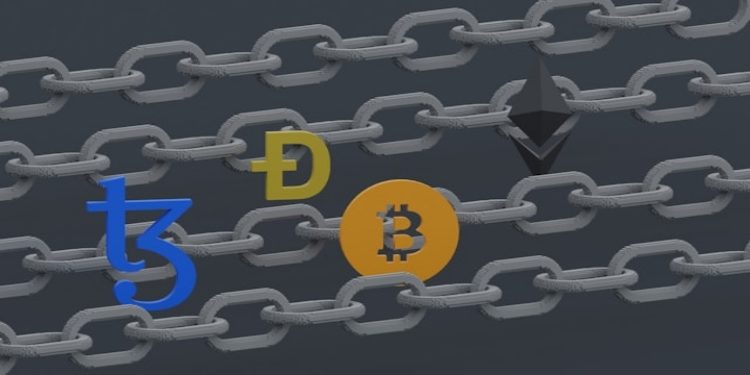Blockchain networks have experienced notable growth, cultivating a decentralized environment. At the core of this progression is the concept of Cross-Chain Protocols, a fundamental element in achieving smooth interoperability. These protocols play a crucial role in connecting various blockchains, fostering collaboration and communication within the decentralized space. The ability to seamlessly transfer assets and information across different chains enhances the overall efficiency and resilience of the blockchain ecosystem. It mitigates the challenges associated with fragmentation, creating a more cohesive network. As the blockchain industry continues to evolve, the importance of these protocols becomes increasingly evident. Emphasizing a collaborative approach among developers, projects, and regulatory bodies is essential for realizing the full potential of cross-chain protocols in the ever-expanding network landscape. Consider utilizing bitcoin-bankbreaker.com/ an Investment Education Firm, to stay informed about the evolving blockchain space.
Understanding Cross-Chain Protocols
Core Concepts and Mechanisms
Cross-Chain Protocols employ several fundamental mechanisms to enable interoperability. Among these, Atomic Swaps facilitate direct asset exchanges between different chains. Hash Time Locked Contracts (HTLC) add an extra layer of security by enforcing time constraints, while Sidechains and Pegged Assets provide flexible solutions for inter-chain communication.
Technical Challenges and Solutions
Navigating the landscape of cross-chain integration isn’t without hurdles. Scalability issues, security concerns, and the intricacies of consensus mechanisms demand careful consideration. Innovations addressing these challenges are essential for the successful implementation of cross-chain protocols.
The Need for Cross-Chain Communication
Fragmentation in the Blockchain Ecosystem
The decentralized nature of blockchain development has resulted in a fragmented ecosystem. Cross-chain protocols emerge as a solution to bridge the gaps, fostering a more cohesive and interconnected blockchain network.
Enhanced Collaboration Opportunities
By facilitating seamless communication between disparate chains, cross-chain protocols open doors to enhanced collaboration opportunities. This connectivity encourages the exchange of data, assets, and functionalities, enriching the overall blockchain experience.
Overcoming Network Silos and Limitations
Cross-chain integration is pivotal in overcoming the limitations imposed by network silos. The ability to share resources and capabilities across different chains creates a more resilient and adaptable blockchain ecosystem.
Benefits of Cross-Chain Integration
Improved Efficiency and Speed
One of the primary advantages of cross-chain integration is the enhancement of transactional efficiency and speed. By enabling assets to move seamlessly between chains, users experience reduced latency and improved overall performance.
Enhanced Security Measures
Cross-chain protocols contribute to enhanced security by leveraging the strengths of different chains. This diversification minimizes the risks associated with a single point of failure, fostering a more robust and secure blockchain environment.
Facilitating Diverse Use Cases
The flexibility offered by cross-chain integration extends to diverse use cases. Whether in finance, supply chain management, or healthcare, the ability to leverage functionalities from multiple chains widens the scope of blockchain applications.
Prominent Cross-Chain Protocols in Action
Polkadot: The Interoperability Enabler
Polkadot stands out as a pioneer in blockchain interoperability. Its unique relay chain architecture facilitates communication between different blockchains, fostering a truly interconnected ecosystem.
Cosmos: Connecting the Blockchains
Cosmos employs the Inter-Blockchain Communication (IBC) protocol to enable secure and efficient communication between sovereign blockchains. This approach ensures interoperability without compromising on security.
Wanchain: Bridging Public and Private Chains
Wanchain specializes in bridging the gap between public and private chains. Through its cross-chain infrastructure, it allows for seamless communication and asset transfer between these distinct blockchain realms.
Challenges and Future Developments
Ongoing Obstacles in Cross-Chain Integration
Despite the progress, challenges persist in achieving widespread cross-chain integration. Issues such as standardization, protocol compatibility, and regulatory hurdles require continued attention and innovative solutions.
Regulatory Considerations
As blockchain technology matures, regulatory frameworks become increasingly relevant. The development and adoption of cross-chain protocols must align with evolving regulatory landscapes to ensure legal compliance and long-term viability.
Future Developments and Industry Trends
Looking ahead, the landscape of cross-chain integration is poised for further evolution. Continued research, technological advancements, and collaborative efforts are expected to shape the future of blockchain interoperability.
Implications for Various Sectors
Finance and Decentralized Finance (DeFi)
In the financial sector, cross-chain protocols have the potential to revolutionize processes such as asset management, lending, and decentralized financial services. The seamless transfer of assets between different chains opens new avenues for decentralized finance.
Supply Chain Management
Blockchain’s transparency and traceability features are particularly beneficial in supply chain management. Cross-chain integration can optimize data sharing and streamline processes across various supply chain participants.
Healthcare and Data Interoperability
In healthcare, cross-chain protocols can facilitate secure and interoperable sharing of patient data. This interoperability ensures that critical information is accessible across different healthcare providers and systems.
Conclusion
In conclusion, cross-chain protocols play a pivotal role in addressing the challenges associated with blockchain fragmentation. Their capacity to establish connections among divergent chains not only amplifies efficiency and security but also unveils a plethora of possibilities for diverse applications. The ongoing evolution of the blockchain industry suggests that cross-chain protocols will likely advance further, constructing a foundation for a seamlessly connected blockchain ecosystem. Fostering the expansion of the blockchain landscape relies on a collaborative approach, emphasizing the importance of cooperation among blockchain developers, projects, and regulatory bodies. This collaborative ethos is indispensable for realizing the complete potential of cross-chain protocols within the continuously expanding network landscape.
David Prior
David Prior is the editor of Today News, responsible for the overall editorial strategy. He is an NCTJ-qualified journalist with over 20 years’ experience, and is also editor of the award-winning hyperlocal news title Altrincham Today. His LinkedIn profile is here.











































































